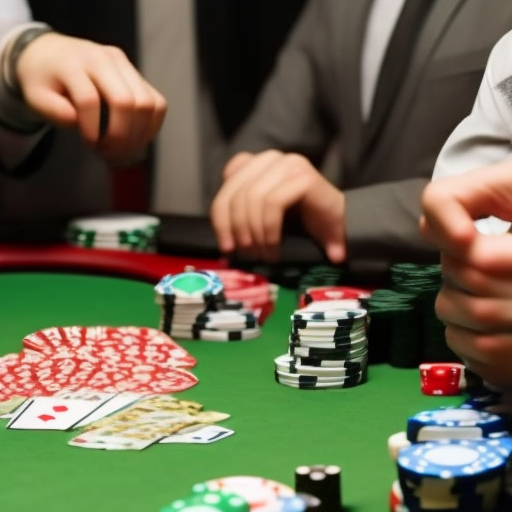It’s an age-old conundrum – why do poker players wait until it’s their turn to look at their cards? Many find it unfathomable why poker players go through the suspenseful process of waiting for their turn to look at the cards that could determine their fate at the table. But in truth, the process isn’t merely a show of patience or superstition, but rather a strategic decision designed to gain the upper hand. So why do poker players wait to look at their cards? Let’s take a look.
The Appeal of Strategy
When it comes to poker, the appeal is not just about the thrill of the game, but also the complexity of the strategy. Unlike other casino games where the outcome is mostly reliant on luck, poker players rely on their strategic skills to gain an advantage over their opponents. And one of the most interesting aspects of poker strategy is the decision to wait to look at your cards.
Imagine playing a game of poker where you know exactly what cards you have before the flop. Sure, it might seem advantageous, but think about how boring the game would become if everyone knew what hand they had before the betting even began. Part of the beauty of poker is the mystery behind what cards you have and how you can use them to your advantage. By waiting to look at your cards, you can start to read your opponents’ energies and gain valuable information about the strength of their hands. This is a key element to successful poker strategy and one that separates the amateurs from the pros. So, the next time you’re wondering why poker players wait to look at their cards, remember that it’s all about the art of the game and the excitement of the strategy.
The Poker Face Myth
When you think of poker, you might immediately picture players with stoic expressions and unwavering poker faces. But the reality is, is just that – a myth.
In fact, many professional poker players use a range of facial expressions and body language to give away information to their opponents. This may include a slight smile for a strong hand, or a furrowed brow for a weaker hand. By purposely giving off these signals, players can manipulate their opponents into making decisions that benefit themselves. So next time you sit down at a game of poker, don’t be afraid to show a little emotion – it might just be your ticket to a big win.
Psychological Triggers
In poker, there’s a little trick that experienced players do to get ahead. They wait before looking at their cards. Why? It all comes down to the at play.
Firstly, it’s a way to intimidate your opponent. Waiting before looking at your cards can be taken as a sign of confidence; as if you already know what cards you have and you’re just waiting for the other player to play their hand. This can make your opponent think twice before making bold moves, allowing you to dictate the pace of the game.
Secondly, it’s a way to control your own emotions. By waiting and taking a deep breath, players calm themselves down and better prepare for the game ahead. It’s a way to remind themselves to think clearly and analytically, rather than letting their emotions take over. This mental preparation can make or break a game, especially if you are in a high-pressure situation like a tournament.
In short, waiting before looking at your cards isn’t just a matter of habit or routine. It’s a strategic move that can give you an edge over your opponent, as well as a way to focus your own mindset. So next time you’re sitting at a poker table, take note of this little trick – it might just take you one step closer to winning big.
Analyzing the Odds
in poker is all about understanding the probability of certain cards coming up and using that knowledge to make informed decisions. Let’s say you’re dealt two cards, a king and a queen of the same suit, also known as ‘Suited Connectors’. The chance of you hitting a flush (five cards of the same suit) by the river is just 10.9%. So, while it might seem tempting to play these cards aggressively, the reality is that the odds are not in your favor.
On the other hand, let’s say you’re dealt a pair of aces. The chance of hitting another ace on the flop (the first three community cards that are dealt face up) is just 4.1%. So, while it might be a great starting hand, it’s important to keep in mind that the odds of improving it on the flop are not that high. This is why experienced poker players are patient and wait to look at their cards in order to analyze the odds and make informed decisions based on the probabilities. The mysteries and strategies of poker can often make the game mysterious and intimidating to novices. However, with some patience and knowledge of the game, anyone can become an experienced poker player. Learning the reasoning behind why poker players wait to look at their cards is a great first step to expanding your knowledge. So, treat yourself to a game of poker with your friends and give it a try!